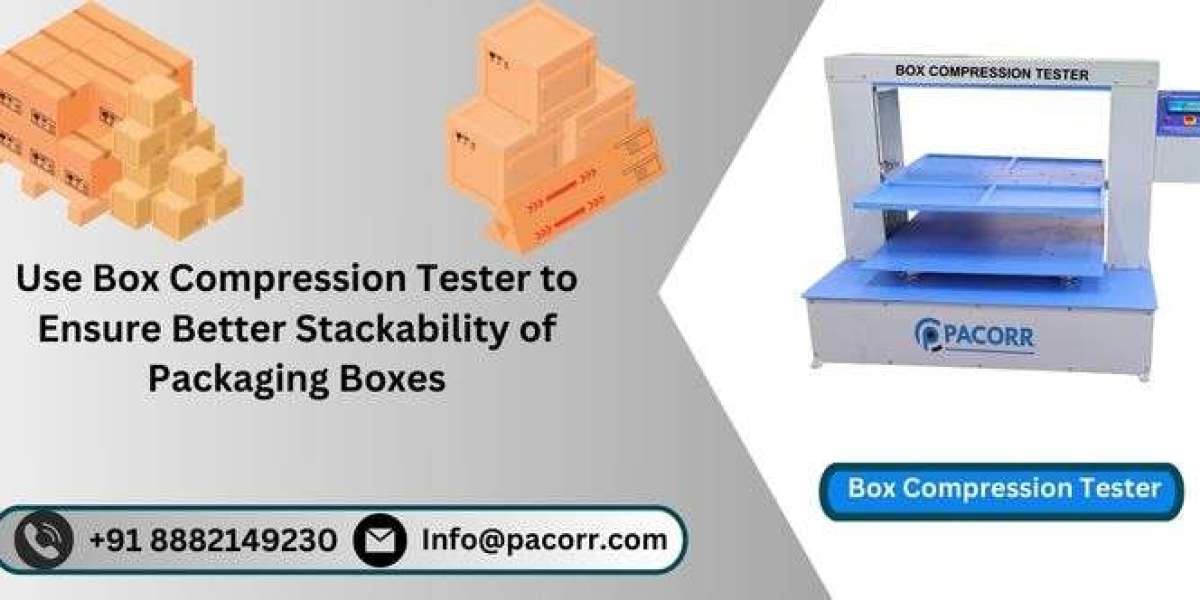Introduction to Box Compression Testing
Box compression testing is a critical method used to determine the compressive strength of packaging materials, primarily corrugated boxes. This testing ensures that the packaging can endure the compressive forces encountered during shipping and storage. By accurately measuring the load a box can withstand before deforming or collapsing, manufacturers can make informed decisions about packaging design and materials.
Key Features of the Box Compression Tester
Robust Construction
The Box Compression Tester is designed with a sturdy frame to handle high compressive loads. This robust construction ensures the accuracy and reliability of test results, even under the most demanding conditions.
Precision Load Cells
Equipped with high-precision load cells, the Box Compression Testing provides accurate measurements of the applied force. This precision is essential for obtaining reliable data that manufacturers can trust.
User-Friendly Interface
Modern Box Compression Tester come with digital displays and intuitive controls, making it easy for operators to set test parameters and view results. The user-friendly interface simplifies the testing process, reducing the potential for operator error.
Adjustable Test Settings
The Box Strength Tester allows users to customize test settings to simulate various conditions. Parameters such as load speed, maximum load, and holding time can be adjusted to match specific testing requirements. This flexibility ensures that the tester can accommodate a wide range of packaging types and sizes.
Benefits of Using a Box Compression Tester
Enhanced Product Protection
By accurately determining the compressive strength of packaging materials, manufacturers can design stronger and more durable boxes. This enhanced protection reduces the risk of product damage during transit and storage, ensuring that products reach customers in perfect condition.
Cost Savings
Understanding the limits of packaging materials can prevent over-engineering, leading to significant cost savings. Manufacturers can optimize their packaging designs to use the right amount of material without compromising strength and durability. This balance between material usage and strength reduces costs and improves sustainability.
Compliance with Industry Standards
Many industries have strict packaging standards that require specific testing to ensure compliance. The Box Compression Tester Price helps manufacturers meet these regulatory requirements, avoiding potential fines and ensuring that their products are packaged safely and securely
Improved Customer Satisfaction
Packaging plays a crucial role in the overall customer experience. Strong and reliable packaging reduces the likelihood of product damage, leading to higher customer satisfaction and fewer returns. By using a Box Compression Tester, manufacturers can ensure that their packaging meets customer expectations.
Applications of the Box Compression Tester
Corrugated Boxes
Corrugated boxes are widely used for shipping and storage, making them one of the most common applications for the Box Compression Tester. Testing the compressive strength of these boxes ensures that they can withstand stacking and handling pressures during transit.
Folding Cartons
Used in various industries, including food and beverage, folding cartons require compression testing to maintain their shape and integrity. The Box Compression Testing helps ensure that these cartons can protect their contents effectively.
Plastic Containers
Plastic containers are another packaging type that benefits from compression testing. By determining their load-bearing capacity, manufacturers can ensure that these containers can support the weight of stacked products without deforming.
How to Use a Box Compression Tester
Prepare the Sample
Place the box or container on the testing platform, ensuring it is cantered and properly aligned. Proper alignment is crucial for obtaining accurate and consistent results.
Set Test Parameters
Using the tester’s control panel, enter the desired test settings, such as load speed, maximum load, and holding time. Adjust these parameters to match the specific requirements of the packaging being tested.
Conduct the Test
Start the test, and the machine will apply a compressive load to the sample. Monitor the test progress on the digital display to ensure everything is proceeding correctly.
Analyze Results
Once the test is complete, review the results to determine the compressive strength of the sample. Use this data to make informed decisions about packaging design and materials, ensuring that the packaging meets the necessary strength requirements.
Conclusion
The Box Compression Tester Price is an indispensable tool for any manufacturer concerned with the durability and reliability of their packaging. By providing precise measurements of compressive strength, it helps ensure that products are well-protected during shipping and storage. This leads to higher customer satisfaction, lower costs, and compliance with industry standards. Investing in a Box Compression Tester is a smart move for any company looking to enhance the quality and reliability of their packaging.
FAQ: Box Compression Tester
Q1: What is the primary function of a Box Compression Tester?
A1: The primary function of a Box Compression Tester is to measure the compressive strength of boxes and other packaging materials to ensure they can withstand the stresses of transportation and storage.
Q2: Why is compressive strength important for packaging?
A2: Compressive strength is important because it indicates how much load a box can handle before deforming or failing. This ensures that the packaging can protect the contents effectively.
Q3: Can the Box Compression Tester be used for materials other than corrugated boxes?
A3: Yes, the Box Compression Testing can be used for various packaging materials, including folding cartons and plastic containers, to test their load-bearing capacity.
Q4: What are some common test parameters that can be set on a Box Compression Tester?
A4: Common test parameters include load speed, maximum load, and holding time. These settings can be adjusted to simulate different conditions and requirements.
Q5: How does using a Box Compression Tester lead to cost savings?
A5: By understanding the compressive strength of your packaging, you can avoid over-engineering, which reduces material usage and associated costs while still ensuring adequate protection.
Q6: Are there industry standards that require the use of a Box Compression Tester?
A6: Yes, many industries have strict packaging standards that require testing for compressive strength to ensure compliance and protect the integrity of shipped products.
Q7: What kind of data does a Box Compression Tester provide?
A7: The tester provides data on the maximum compressive load the packaging can withstand before failure, which helps in making informed decisions about packaging design and materials.
For more detailed information and to explore our range of testing equipment, visit Pacorr Testing Instruments





